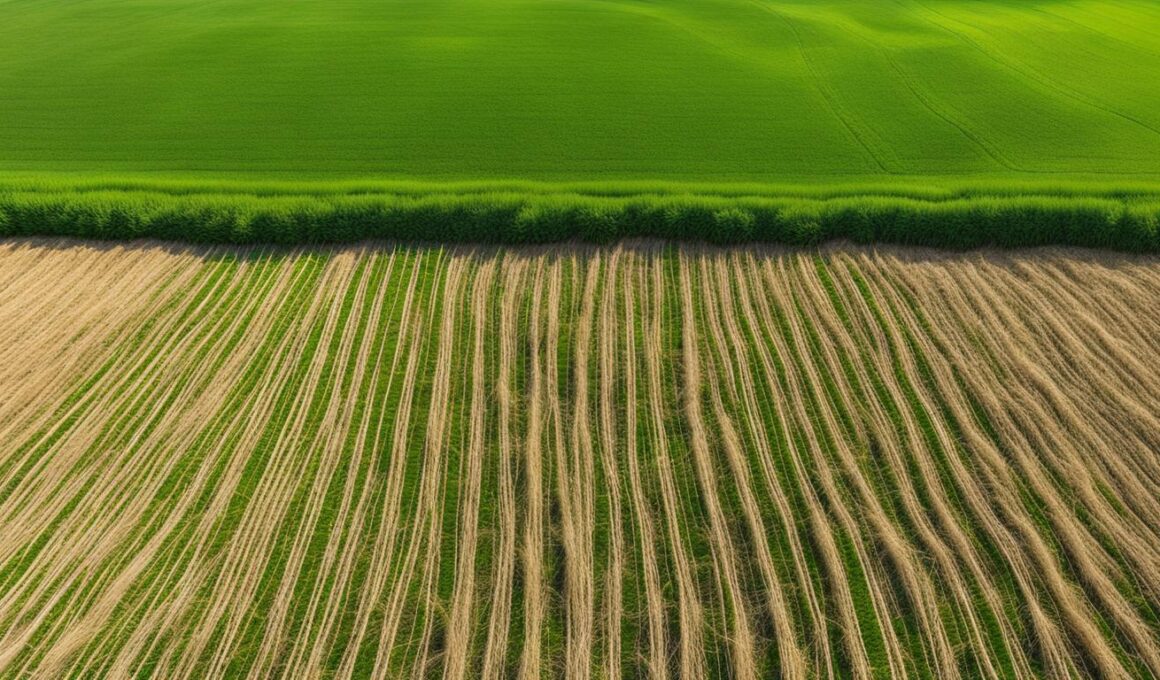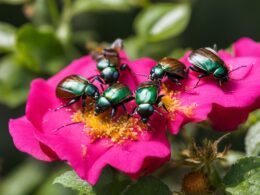When it comes to covering grass seed with straw, finding the optimal amount is key to ensuring successful growth. The amount of straw needed depends on various factors, including the size of the area, site conditions, and desired results. Recommendations from gardening guides and forum discussions suggest different amounts, ranging from 1 bale for every 300 to 700 square feet of seeded area.
Striking the right balance is important. You want enough straw to provide erosion control and moisture retention, but not so much that it hinders new growth. Some recommendations point to using about 140 bales per acre, while others suggest around 100 bales or even fewer.
Factors such as site conditions, aftercare, and application method can also influence the amount of straw needed. By considering these factors, you can determine the optimal amount of straw to cover your grass seed and set the stage for healthy growth.
Tips for Covering Overseeded and Thin Areas
When overseeding established grass or filling in thin areas in your lawn, there are a few key tips to keep in mind to ensure successful growth. Here’s how to properly cover overseeded and thin areas:
-
Prepare the area: Before spreading the grass seed, remove any debris and loosen the soil. This will create a favorable environment for new growth.
-
Spread the grass seed: Use a spreader to evenly distribute the grass seed at a rate of 4 to 5 seeds per square inch of the area. This will help ensure optimal coverage and germination.
-
Apply a layer of straw: To prevent the newly seeded areas from drying out and to promote moisture retention, apply a thin layer of straw or hay. The recommended rate is 1 bale per 1000 square feet. This will help protect the seeds and provide an ideal environment for growth.
-
Scatter the straw lightly: When applying the straw, make sure to scatter it lightly over the overseeded and thin areas. This will allow visibility of the ground and ensure that the seeds can establish contact with the soil for germination.
By following these tips, you can enhance the success of overseeding and filling in thin areas in your lawn. The straw will aid in moisture retention and protection of the seeds, helping them establish healthy growth.
Remember, maintaining proper moisture levels is crucial during the germination and early growth stages. Regularly water the overseeded and thin areas to keep the soil moist but not soaked. With the right care and attention, you’ll soon enjoy a luscious, full lawn.
Steps for Covering New Grass Areas
When it comes to establishing a new grass area, proper preparation and careful seed coverage are key. Follow these simple steps to ensure the best chance of success for your new grass:
- Remove Debris and Vegetation: Begin by clearing the area of any debris, such as rocks, sticks, or weeds. This will provide a clean slate for the new grass to thrive.
- Till and Smooth the Soil: Lightly till the soil using a garden tiller or a rake to loosen it. Smooth out any uneven areas to create a level surface for planting.
- Spread the Grass Seed: Choose high-quality grass seed suitable for your region and grass type. Whether you prefer to spread the seed by hand or with a mechanical spreader, ensure an even distribution at a rate of 8 pounds per 1000 square feet. Adjust the spreader setting to achieve a coverage of 4 to 5 seeds per inch.
- Rake to Incorporate the Seed: After spreading the grass seed, lightly rake the area to gently incorporate the seeds into the soil. This will promote better seed-to-soil contact and increase the chances of successful germination.
- Apply a Light Covering of Straw: To protect the newly planted seeds and aid in moisture retention, it is recommended to apply a light covering of straw. Use no more than 1 bale per 1000 square feet. The purpose of the straw is to create a microclimate that encourages seed germination while allowing patches of soil to be visible between the pieces of straw.
Following these steps will help create an optimal environment for your new grass to thrive. Now let’s take a look at the importance of straw coverage for grass seed in the next section.
Conclusion
The optimal amount of straw to cover grass seed depends on various factors, including the size of the area, site conditions, and desired results. Recommendations from different sources range from 1 bale for every 300 to 700 square feet, with some suggesting around 140 bales per acre.
It’s important to balance the coverage to provide erosion control and moisture retention, while also allowing new growth. Whether overseeding or establishing a new lawn, the steps involve preparing the soil, spreading the grass seed at the recommended rate, and applying a light layer of straw for protection and moisture retention. By following these guidelines, you can ensure the best chance of success for your grass seed.
How to Use Straw to Cover Grass Seed in Shaded Areas with Creeping Myrtle Ground Cover?
When planting grass seed in shaded areas with creeping myrtle ground cover, consider using straw to protect the seeds. Simply sprinkle the straw over the area to create a barrier from sunlight and keep the seeds moist. This can help promote the growth of the lush shade perennial ground cover.










